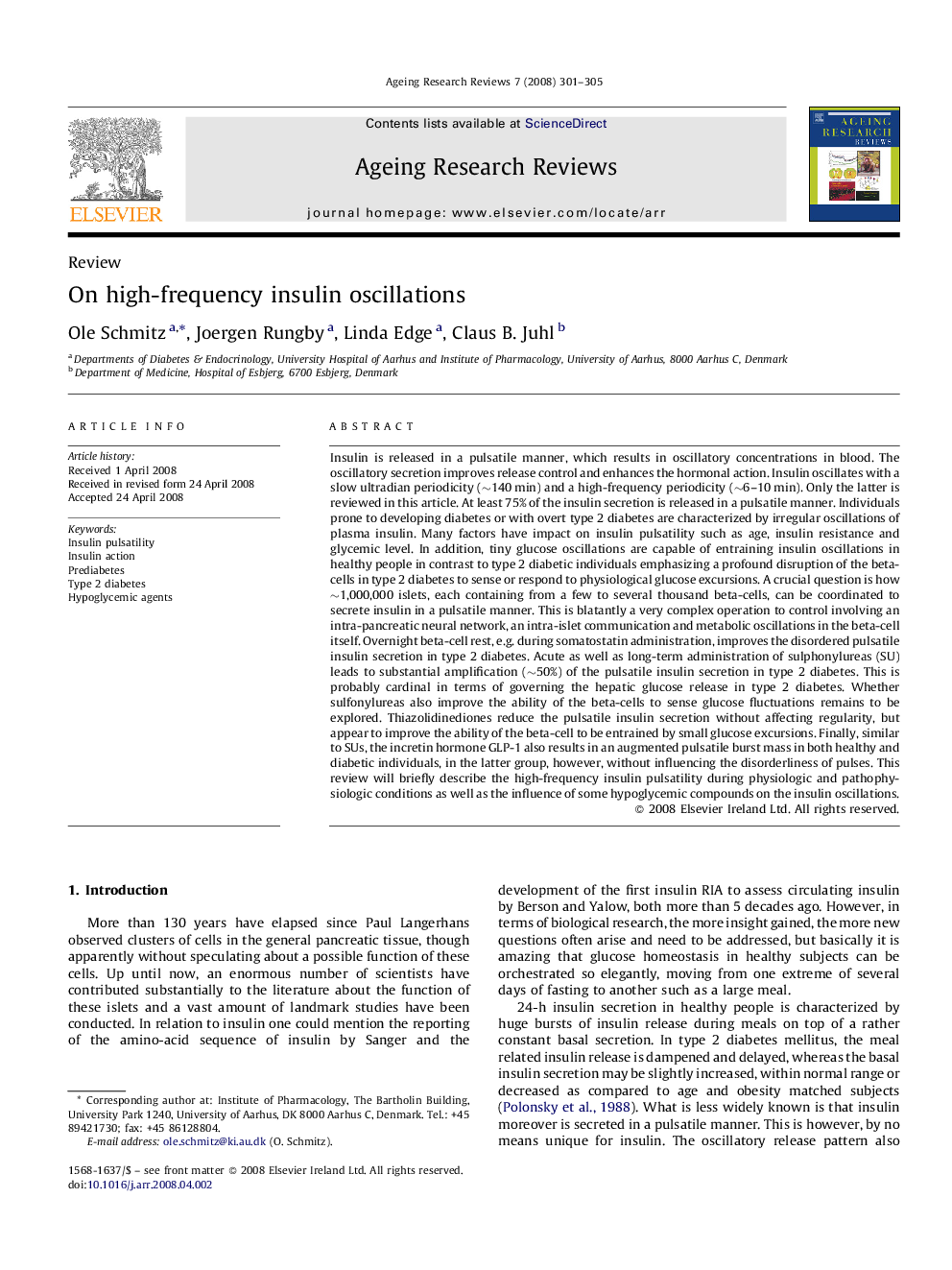| Article ID | Journal | Published Year | Pages | File Type |
|---|---|---|---|---|
| 1902581 | Ageing Research Reviews | 2008 | 5 Pages |
Insulin is released in a pulsatile manner, which results in oscillatory concentrations in blood. The oscillatory secretion improves release control and enhances the hormonal action. Insulin oscillates with a slow ultradian periodicity (∼140 min) and a high-frequency periodicity (∼6–10 min). Only the latter is reviewed in this article. At least 75% of the insulin secretion is released in a pulsatile manner. Individuals prone to developing diabetes or with overt type 2 diabetes are characterized by irregular oscillations of plasma insulin. Many factors have impact on insulin pulsatility such as age, insulin resistance and glycemic level. In addition, tiny glucose oscillations are capable of entraining insulin oscillations in healthy people in contrast to type 2 diabetic individuals emphasizing a profound disruption of the beta-cells in type 2 diabetes to sense or respond to physiological glucose excursions. A crucial question is how ∼1,000,000 islets, each containing from a few to several thousand beta-cells, can be coordinated to secrete insulin in a pulsatile manner. This is blatantly a very complex operation to control involving an intra-pancreatic neural network, an intra-islet communication and metabolic oscillations in the beta-cell itself. Overnight beta-cell rest, e.g. during somatostatin administration, improves the disordered pulsatile insulin secretion in type 2 diabetes. Acute as well as long-term administration of sulphonylureas (SU) leads to substantial amplification (∼50%) of the pulsatile insulin secretion in type 2 diabetes. This is probably cardinal in terms of governing the hepatic glucose release in type 2 diabetes. Whether sulfonylureas also improve the ability of the beta-cells to sense glucose fluctuations remains to be explored. Thiazolidinediones reduce the pulsatile insulin secretion without affecting regularity, but appear to improve the ability of the beta-cell to be entrained by small glucose excursions. Finally, similar to SUs, the incretin hormone GLP-1 also results in an augmented pulsatile burst mass in both healthy and diabetic individuals, in the latter group, however, without influencing the disorderliness of pulses. This review will briefly describe the high-frequency insulin pulsatility during physiologic and pathophysiologic conditions as well as the influence of some hypoglycemic compounds on the insulin oscillations.
